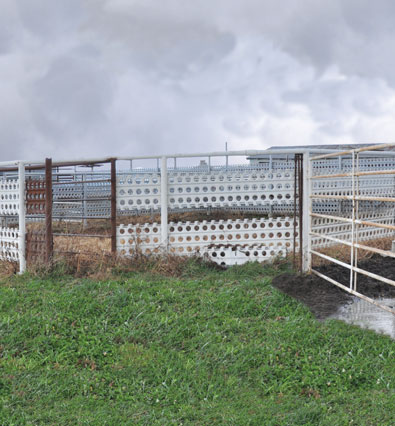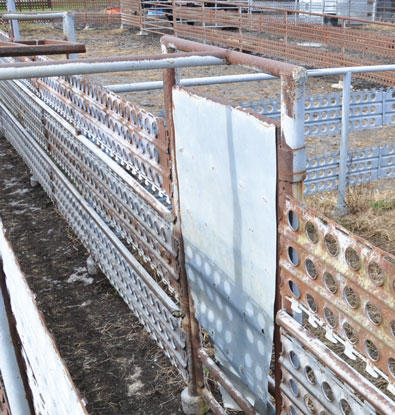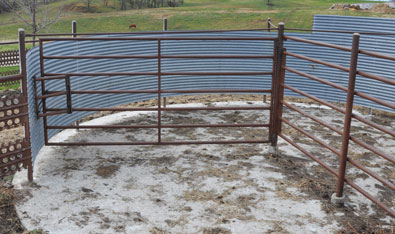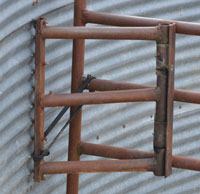Built To Last

Les Irving, a fourth-generation cattleman, needed a new system to work cattle when he and his wife, Roxanne, moved to their new farm in 1993. Irving designed cattle pens and a processing area that stretches along the driveway atop a ridge on their farm northwest of Chariton, Iowa.
Irving slowly built his handling system of pens, gates, alleys, processing area and windbreak using mostly scrap steel. For the sides of corrals and the alleyway leading to the processing chute, he recycled old aviation landing pad steel.
"The landing pads were originally used during World War II to land airplanes in the South Pacific," Irving explains. "Some of the pads were used as the parking lot base at the National Guard Armory in Chariton. When they tore up the old parking lot, I got a bunch of the pads."
He also traveled to Nebraska for old oil-field pipe that he turned into the posts and rails for corrals and pens. Most of the posts are made from schedule 40–gauge, 27⁄8" steel. Top braces are 23⁄8" steel to fit into the posts. Rails are 7⁄8" sucker rod. Irving welded together the original system of pens and corrals with help from a friend, Ronnie Kent of Chariton.
Irving learned from other cattlemen that even steel can be eroded by long-term exposure to manure. To keep manure from damaging the steel posts, he set each post in concrete with a 6" raised concrete collar.
Today, Irving and his son, Shane, are equal partners in a 400-head cowherd of commercial and registered Angus. In addition, Les has a custom hay operation and Shane has a custom hog-feeding operation with 1,500 head of space.
They have just finished a new windbreak of steel sheets on the northwest side of the pen system. Cattle were lounging near the windbreak on a recent cold and blustery day. Although they don't have an estimated cost for the cattle facilities on Les' farm, they consider the all-steel system much better than wood due to steel's longevity.
"Steel has gone up a lot since I started building these facilities, but so has wood," Les says.
"With wood, you consider the cost of it, then multiply by four because that's about how many times you'd have to replace it compared to steel," Shane adds.
For now, the Irvings are satisfied with their facilities. They've built and expanded a cattle-handling system they hope will be around for the next generation. BT
Outside corners of corrals are angled to keep cattle from bunching up in the corners. The two posts at the entrance are slightly offset to allow a gooseneck trailer to unload at an angle. 
Les (left) and Shane Irving work cattle in a handling system they built with mostly scrap steel. The alleyway sides are made from old aviation landing pads. The swing gate near Shane at upper right keeps cattle from backing up in the alley leading to the processing chute.
 |
| The solid-sided gate can be used as a walk-through into the alley to move cattle or as an access for the chute if another pen is needed during processing. |
 |
| The sweep tub is made with 24' dia-meter grain bin sheets. A concrete pad makes a solid floor to keep cattle from slipping. The swing gate is 12' wide to smoothly move animals into the tub. |
 |
| To allow for expansion and contraction in the longest sections of his cattle pens, Les Irving inserted slip joints. A 2' section of steel tubing is welded to the 27⁄8" steel posts. About 8" of the sucker-rod rails are inserted into each end of the tubing, which allows for 6" to 8" of expansion or contraction. The top rail also has slip joints at about 150' apart. |
 |
| The brake gate in the sweep tub has a rubber tie bolted to the gate end. If cows back up into the gate, it tightens against the sheets and stays in place. |







